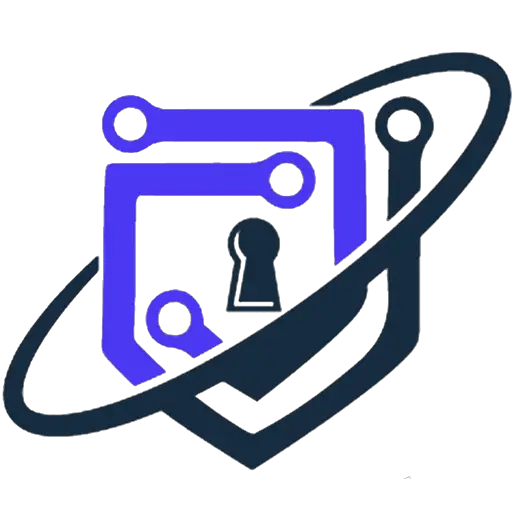In a world increasingly shaped by blockchain technology, we often marvel at its security promises. The distributed and decentralized nature of blockchains has revolutionized industries, promising transparency and tamper-proof transactions. However, as we navigate this intricate landscape, it becomes imperative to question: Do these digital ledgers have chinks in their armor? Are Blockchains vulnerable ?
Blockchain technology, renowned for its security features, is not immune to vulnerabilities. While its decentralized nature adds robustness, potential risks like 51% attacks, smart contract flaws, vulnerable node softwares, and evolving cyber threats underscore the need for ongoing vigilance and innovative security measures.
Join us as we embark on a journey to unravel the intricacies of blockchain vulnerabilities, exploring the very foundation of their security. Are Blockchains vulnerable, or do they stand resilient in the face of emerging challenges? Let’s uncover the answers together.
What are the different attack surface of the Blockchain?
In the vast realm of technological innovation, blockchain has emerged as a groundbreaking force, promising to reshape industries and redefine the way we transact and interact. At its core, blockchain is a distributed ledger technology that operates on a decentralized network. To truly grasp the intricacies and functionalities of this transformative system, it’s essential to delve into the six layers that constitute the blockchain framework.
At the foundation of the blockchain architecture lies the TCP/IP network layer, a fundamental component that enables communication between devices over the internet. This layer ensures that data is transmitted reliably and efficiently across the network, setting the groundwork for the seamless operation of blockchain. Just as the nervous system serves as the backbone of the human body, the TCP/IP network layer is the connective tissue that facilitates the flow of information within the blockchain ecosystem.
Moving up the blockchain hierarchy, we encounter the Peer-to-Peer (P2P) protocols layer, which is instrumental in creating a decentralized network. Unlike traditional centralized systems, P2P protocols distribute control and authority among participants, fostering a more democratic and resilient network. This layer is pivotal in eliminating single points of failure, enhancing security, and promoting a trustless environment where participants can transact directly with one another without the need for intermediaries.
The Consensus Algorithms layer is the heartbeat of blockchain, ensuring that all nodes in the network reach an agreement on the validity of transactions and the state of the ledger. Various consensus algorithms, such as Proof of Work (PoW) and Proof of Stake (PoS), play a crucial role in maintaining the integrity of the blockchain. These algorithms serve as the mechanism through which consensus is achieved, preventing malicious actors from manipulating the system and guaranteeing the immutability of the recorded data.
Cryptography algorithms form the protective shield of the blockchain, securing data and transactions from unauthorized access and tampering. This layer employs advanced cryptographic techniques, including hash functions and digital signatures, to safeguard the confidentiality and integrity of information. As the world becomes increasingly interconnected, the importance of robust cryptographic algorithms cannot be overstated, as they fortify the blockchain against cyber threats and ensure the privacy of users.
Ascending further, we reach the Execution layer, where the core activities of the blockchain take place. This layer encompasses data blocks and transactions, serving as the repository for all recorded information. Data blocks, organized in a chronological chain, store a series of transactions, forming the immutable ledger that defines blockchain. Transactions, representing the transfer of assets or information, are the building blocks of this layer, contributing to the transparency and traceability of the blockchain.
Finally, at the pinnacle of the blockchain architecture, we find the Applications layer, which encompasses decentralized applications (Dapps) and smart contracts. Dapps operate on a peer-to-peer network, offering users a decentralized alternative to traditional applications. Smart contracts, self-executing contracts with the terms of the agreement directly written into code, automate and enforce contractual agreements without the need for intermediaries. This layer extends the functionality of blockchain beyond simple transactions, unlocking a myriad of possibilities across various industries, from finance and healthcare to supply chain and entertainment.
What are known vulnerabilities of each layer of the Blockchain?
In the complex world of blockchain technology, we see different computer parts working together to build the foundation of the blockchain. However, it’s crucial to understand that each part of the blockchain could face the same known issues in the tech world.
The TCP/IP Network
The TCP/IP network, being the foundation of internet communication, is susceptible to various vulnerabilities and attacks. One common threat is the Man-in-the-Middle (MitM) attack, where an attacker intercepts and potentially alters the communication between two parties. Additionally, IP spoofing allows malicious entities to impersonate legitimate users, gaining unauthorized access. Denial of Service (DoS) and Distributed Denial of Service (DDoS) attacks overwhelm the network with traffic, disrupting normal operations. To counter these vulnerabilities, encryption protocols such as SSL/TLS are employed to secure data transmission over the TCP/IP network.
Peer-to-Peer Protocols
Peer-to-Peer (P2P) protocols are designed to decentralize networks, but they are not immune to security threats. Sybil attacks involve creating multiple fake identities to control a significant portion of the network, compromising its integrity. Eclipse attacks aim to isolate a node by controlling all its incoming and outgoing connections. Additionally, P2P networks may be vulnerable to routing attacks, where malicious nodes manipulate the flow of information. Implementing robust identity verification mechanisms and ensuring network diversity are crucial for addressing these vulnerabilities.
Consensus Algorithms
Consensus algorithms, critical for maintaining the integrity of a blockchain, face vulnerabilities that can impact the entire network. The 51% attack, a common threat, occurs when an entity controls the majority of the network’s computing power, allowing them to manipulate transaction confirmations. Another challenge is the Sybil attack, where an adversary creates multiple fake nodes to influence the consensus process. Byzantine Fault Tolerance (BFT) algorithms are designed to counter such attacks by ensuring agreement among nodes even in the presence of malicious actors.
Cryptography Algorithms
Cryptography forms the backbone of blockchain security, but vulnerabilities can still arise. Brute force attacks involve attempting to break encryption by systematically trying all possible combinations. Known-plaintext attacks exploit the vulnerability of a system when both the plaintext and corresponding encrypted text are known. Quantum computing poses a potential threat to traditional cryptographic methods. Regularly updating encryption algorithms and adopting quantum-resistant cryptographic techniques are essential to mitigate these risks.
Execution
The execution layer, involving data blocks and transactions, is susceptible to various attacks. Double-spending attacks occur when a user spends the same cryptocurrency more than once by manipulating the transaction process. Transaction Malleability involves altering transaction details without changing the transaction ID. Smart contract vulnerabilities, such as reentrancy attacks, exploit coding flaws to manipulate contract execution. Rigorous testing, code audits, and adopting secure coding practices are essential to minimize vulnerabilities in the execution layer.
Applications (DApps, Smart Contracts …)
Decentralized Applications (DApps) and smart contracts introduce their own set of vulnerabilities. Security risks in smart contracts may lead to vulnerabilities like the DAO attack, where a flaw allowed attackers to siphon funds. Front-running attacks involve exploiting the order of transactions to gain an advantage. DApp platforms may face security challenges due to improper implementation of consensus mechanisms. Regular audits, secure coding practices, and continuous monitoring are crucial for identifying and addressing vulnerabilities in applications built on blockchain technology.
How can we avoid those vulnerabilities ?
Mitigating vulnerabilities in blockchain requires a multifaceted strategy. Regular updates and patch management are vital to address known weaknesses, ensuring that software, protocols, and algorithms remain resilient. Employing robust encryption methods, such as SSL/TLS, and adopting quantum-resistant cryptography fortify data security. Effective network monitoring, anomaly detection systems, and identity verification mechanisms prevent and quickly respond to malicious activities. Diversifying consensus algorithms and conducting thorough code audits for smart contracts enhance the overall security posture. Rigorous testing, including penetration testing, identifies and rectifies vulnerabilities during the development phase. Emphasizing decentralization and redundancy minimizes the impact of single points of failure, while fostering community collaboration enables timely information sharing about emerging threats. Educating users on best security practices, like safeguarding private keys, and implementing adaptive security policies contribute to a more secure blockchain ecosystem. In essence, a proactive and collaborative approach, coupled with continuous learning and adaptation, forms the foundation for avoiding vulnerabilities in blockchain technology.











Post comments (0)